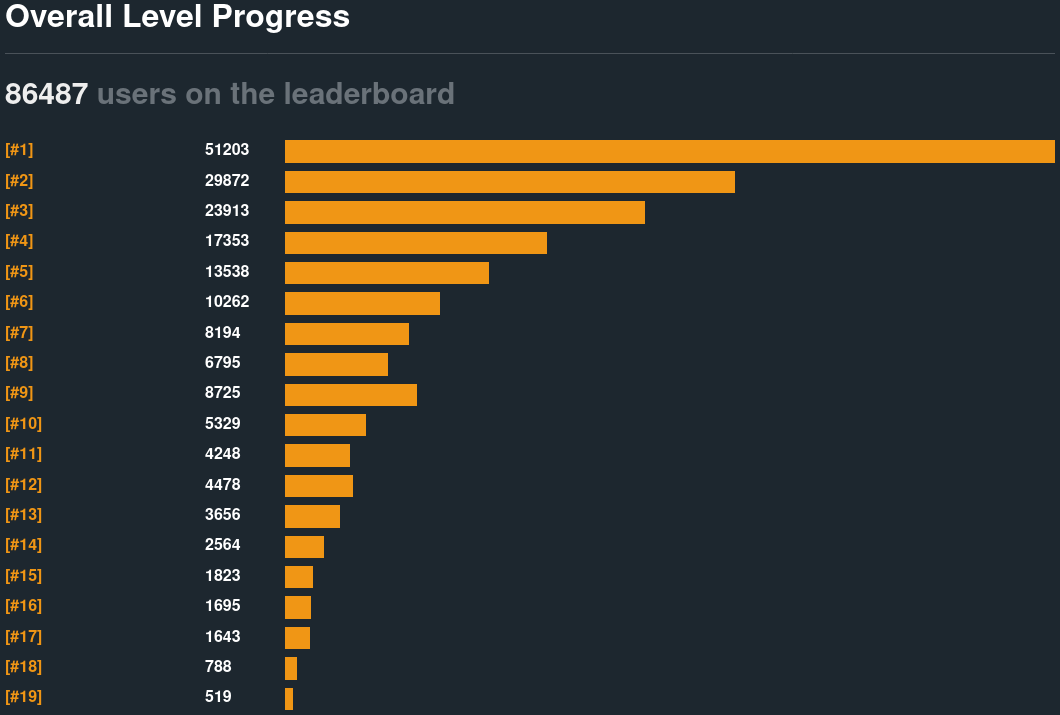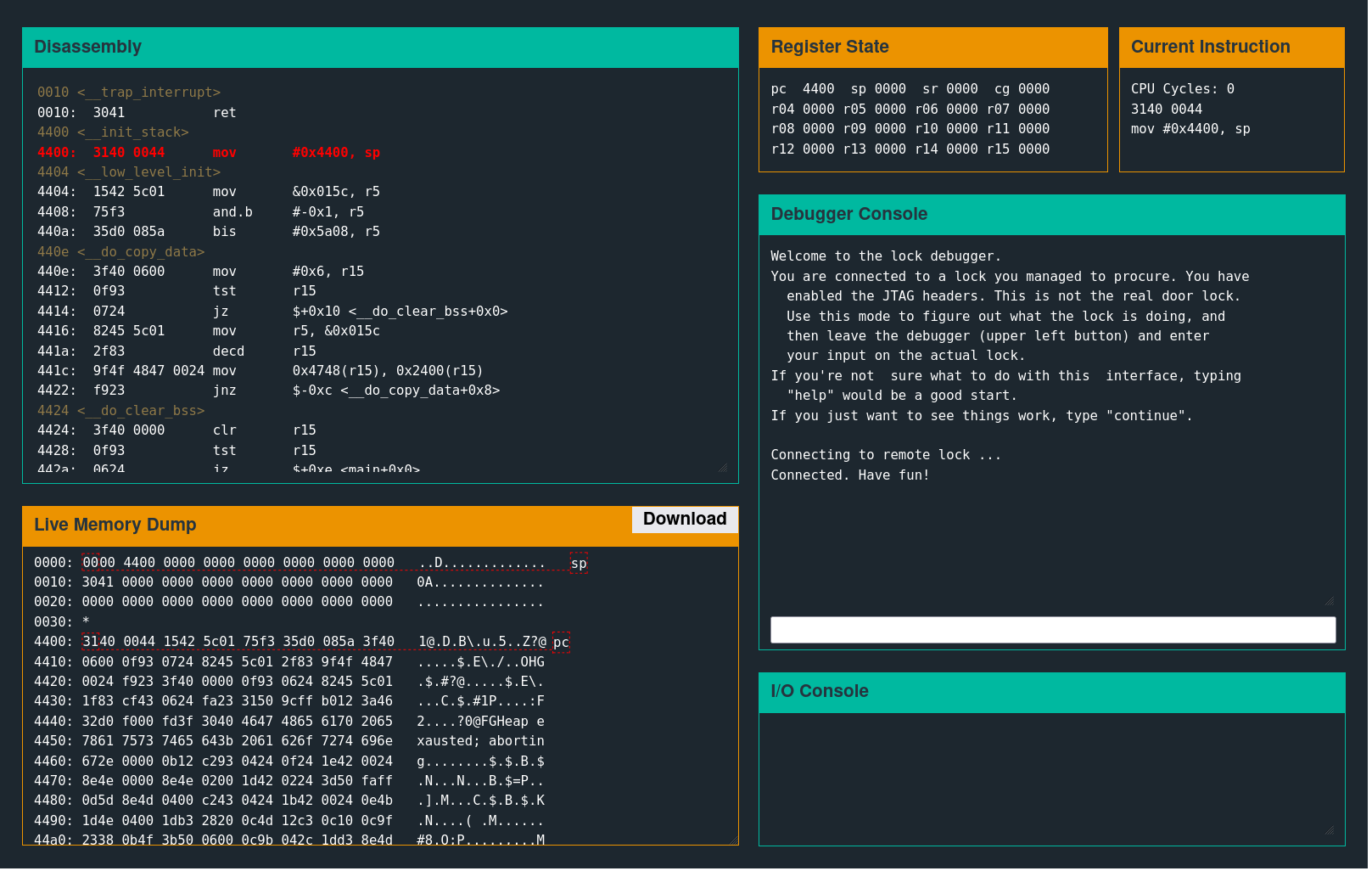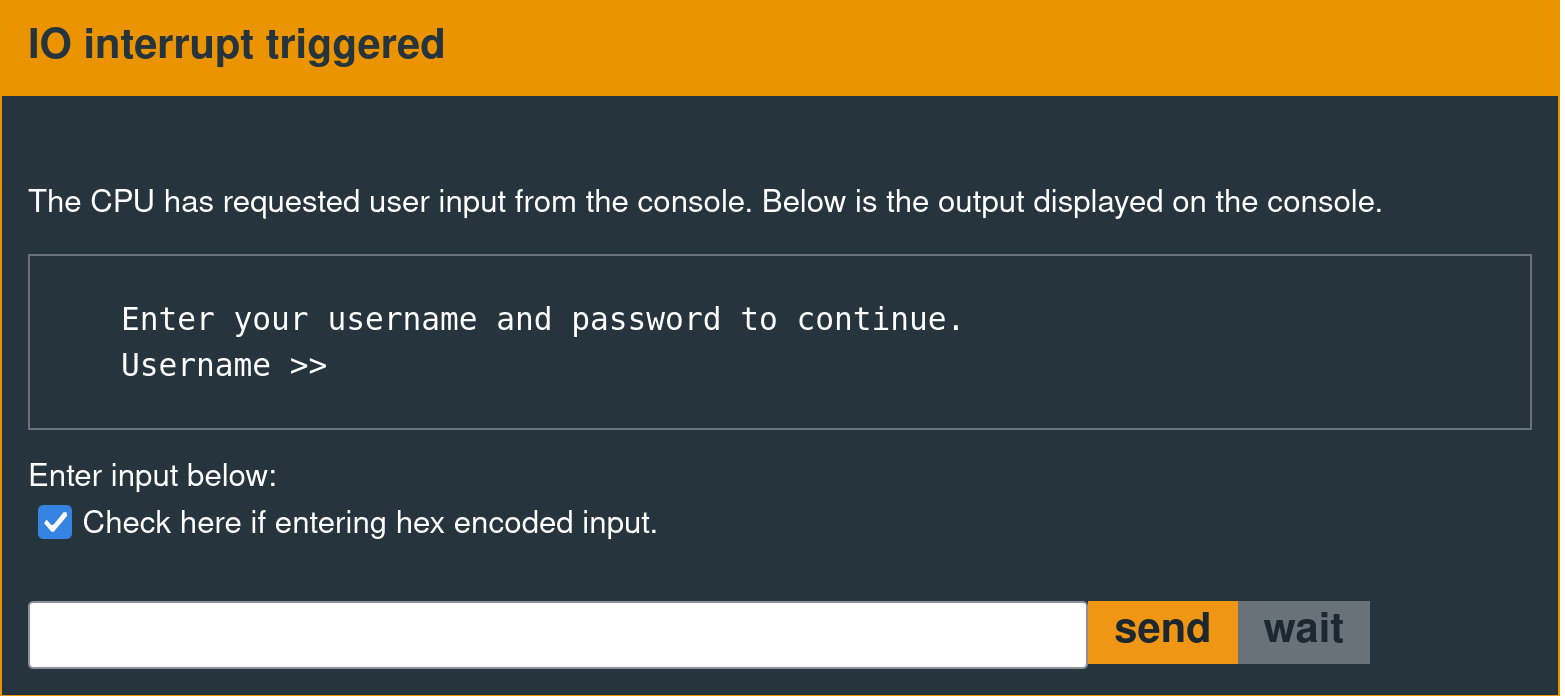I’ll See Your FPGA and Raise You a Pencil:
Cracking Hashes Like It's 1837
Abstract
This page is a walkthrough for a novel exploit for Hollywood, the ultimate challenge from the Microcorruption wargame originally developed by Matasano.
Executive Summary
Fifty thousand people tried this;
five hundred succeeded.
Ten wrote about it: five brute-forced it in a higher level language,
Alex van Poppelen
Vítězslav Čížek
Zijun Hui
Ichiji001
Tux3
three used z3,
Guillaume Vigeant
Grazfather
Laanwj
and one broke the algorithm eighteen ways on an FPGA.
Aaron Ferrucci
Here's how to crack it in five lines of math on the back of a napkin.
Overview
First Working Exploit: 2157 UTC, July 2nd, 2020Reading Time: 10 minutes
Rendering Note:
There is a known issue with Android lacking a true monotype system font, which breaks many of the extended ASCII character set diagrams below. Please view this page on a Chrome or Firefox-based desktop browser to avoid rendering issues. Ideally on a Linux host.

System Architecture
The emulated device runs on the MSP430 instruction set architecture. It uses a 16-bit little-endian processor and has 64 kilobytes of RAM. The official manual includes the details, but relevant functionality is summarized below.
Interface
Several separate windows control the debugger functionality.

A user input prompt like the following is the device's external communication interface.

Exploit Development Objective
The equivalent of popping a shell on this system is calling interrupt 0x7F.
Disassembly
3240 00ff mov #0xff00, sr
b012 1000 call #0x10
Assembly
324000ffb0121000On this firmware version, there is a dedicated function that does this. The following message is displayed in the interface when the implementation calls this interrupt successfully.

High-Level Analysis
The Hollywood firmware includes the following countermeasures.
- Jumps into the middle of multi-word instructions to break linear sweep disassemblers.
- Runtime packing.
- ASLR for each instruction.
- The Poor Man's Virtual Machine.
- A custom hashing algorithm.
Other walkthroughs explain how to circumvent these countermeasures in greater detail. Those wishing for a more complete analysis should consult the one by Grazfather.
Counter-Countermeasures
The problem posed by the code jumping into the middle of multi-word instructions is relatively simple to circumvent with a program like Ghidra or IDA Pro, which are intelligent enough to follow the actual control flow and avoid instruction mangling. This tooling provides little information because it later chokes on the runtime packing.
Breaking The ASLR
The first objective is to break the random number generator so that it always adds zero to the base address. The following debugger macro patches the rand interrupt calls so they always return zero.
let 44c2=430f; let 44c4=4302; let 456e=430f; let 4570=4302The Poor Man's Virtual Machine
After single-stepping and manually reading a few thousand opcodes, it becomes apparent that there are intermittent calls to address 0xe000. On each call, that address will contain a single unique instruction that will execute before returning.
Again, this is after breaking the ASLR by patching out the rand calls. If the rand calls are left unpatched, the implementation will generate a random number, add it to the base address 0xe000, copy one instruction to the resulting randomized address, append a RET instruction, call the gadget, and zero it afterward. This cycle will then repeat. Another author, Guillaume Vigeant, referred to this behavior as a "poor man's virtual machine".
Extracting The Algorithm
The "virtual machine" instructions can be single-stepped by breaking at address 0xe000, continuing, and observing the contents of the PC register with each iteration. The string below prints to the console, one character at a time, with every two steps.
What's the password?The state of the system is only interesting after it reads untrusted input. Skipping to the gets interrupt call requires unbreaking address 0xe000 and continuing, which causes execution to skip to the prompt for user input. The macro to achieve this, starting from a reset, is as follows.
let 44c2=430f; let 44c4=4302; let 456e=430f; let 4570=4302; c; break e000Stepping through VM execution from this point onward allows manual extraction of the following algorithm, instruction by instruction.
mov #0x2600, r5
clr r6
add @r5, r4
swpb r4
xor @r5+, r6
xor r4, r6
xor r6, r4
xor r4, r6
tst 0x0(r5)
mov sr, r7
and #0x2, r7
rra r7
xor #0x1, r7
swpb r7
rra r7
sxt r7
swpb r7
sxt r7
mov #0x4b18, r8
and r7, r8
xor #-0x1, r7
and #0x47aa, r7
add r7, r8
clr r7
add @r5, r4
swpb r4
xor @r5+, r6
xor r4, r6
xor r6, r4
xor r4, r6
tst 0x0(r5)
mov sr, r7
and #0x2, r7
rra r7
xor #0x1, r7
swpb r7
rra r7
mov #0x4b18, r8
and r7, r8
xor #-0x1, r7
and #0x47aa, r7
add r7, r8
clr r7
cmp #0xfeb1, r4
mov sr, r7
clr r4
cmp #0x9298, r6
and sr, r7
clr r6
rra r7
xor #0x1, r7
swpb r7
rra r7
rra r7
rra r7
rra r7
bis r7, srCustom Hashing Algorithm
This code is very similar to the bytecode emitted by a JIT compiler—a higher-level abstraction may be generating it on the fly.
Success Condition
The following checks occur near the end of the algorithm.
cmp #0xfeb1, r4
mov sr, r7
clr r4
cmp #0x9298, r6
and sr, r7
clr r6
These instructions set the contents of R7 based on the boolean result of the CMP instructions. After some massaging, this value is XORed with SR.
rra r7
xor #0x1, r7
swpb r7
rra r7
rra r7
rra r7
rra r7
bis r7, sr
For context, some bits in SR are hardware control flags.
See Figure 3-6 in this document.

If the previous comparisons fail, the code sets the "CPU OFF" bit in SR via a convoluted series of bitwise operations, halting the processor.
If they succeed, that bit remains unset, and the firmware calls the unlock interrupt.
The extracted algorithm comes from an execution trace, which does not include the unlock interrupt call because that instruction only executes when the password is valid.
The goal is simple: craft an input such that registers R4 and R6 contain 0xfeb1 and 0x9298, respectively.
Control Flow
This algorithm iterates over the supplied password, one 16-bit word at a time, to calculate a four-byte hash. The diagram below depicts the relevant sections of the algorithm.
Only operations that affect the contents of R4 and R6 are relevant. The diagram omits the rest of the instructions for brevity.
┌─────────┐ ┌────────────────────┐
│ INITIAL │ │mov #0x2600, r5│
│ SETUP │ │clr r6 │
└─────────┘ └────────────────────┘
┌─────────┐ ┌────────────────────┐◄──────┐
│ │ │add @r5, r4 │ │
│ │ │swpb r4 │ │
│HASHING │ │xor @r5+, r6 │ │
│ALGORITHM│ │xor r4, r6 │ "JNZ" │
│ │ │xor r6, r4 │ │
│ │ │xor r4, r6 │ │
│ │ │tst 0x0(r5) │ │
└─────────┘ └────────────────────┴───────┘
┌─────────┐ ┌────────────────────┐
│ │ │cmp #0xfeb1, r4│
│ │ │mov sr, r7 │
│ │ │clr r4 │
│ │ │cmp #0x9298, r6│
│ │ │and sr, r7 │
│ CHECK │ │clr r6 │
│ OUTPUT │ │rra r7 │
│ VALID │ │xor #0x1, r7 │
│ │ │swpb r7 │
│ │ │rra r7 │
│ │ │rra r7 │
│ │ │rra r7 │
│ │ │rra r7 │
│ │ │bis r7, sr │
└─────────┘ └────────────────────┘
Constraints
The algorithm breaks out of the loop when the current word is null. It is possible to have null bytes in the password, but null words are prohibited.
Understanding The Algorithm
Consider the highlighted section below.
┌─────────┐ ┌────────────────────┐◄──────┐
│ │ │add @r5, r4 │ │
│ │ │swpb r4 │ │
│HASHING │ │xor @r5+, r6 │ │
│ALGORITHM│ │xor r4, r6 │ "JNZ" │
│ │ │xor r6, r4 │ │
│ │ │xor r4, r6 │ │
│ │ │tst 0x0(r5) │ │
└─────────┘ └────────────────────┴───────┘
As other writeups have observed, this effectively swaps the contents of R4 and R6. The x86 platform typically implements such an operation with a single XCHG instruction. While the following assembly is not valid for the MSP430 ISA, the visual tweak makes the algorithm simpler to understand.
┌─────────┐ ┌────────────────────┐◄──────┐
│ │ │add @r5, r4 │ │
│HASHING │ │swpb r4 │ │
│ALGORITHM│ │xor @r5+, r6 │ "JNZ" │
│ │ │xchg r4, r6 │ │
│ │ │tst 0x0(r5) │ │
└─────────┘ └────────────────────┴───────┘
Test Input
Consider what happens with the following test password. Note that all inputs are hex strings.
11223344
Algorithm Behavior
┌─────┐ ┌─────┐
│ R4 │ │ R6 │
├──┬──┤ ├──┬──┤
│00│00│ │00│00│
└──┴──┘ └──┴──┘
┌──────┬──┬──┬──┬──┬──┬──┐
│INPUT │11│22│33│44│00│00│
└──────┴──┴──┴──┴──┴──┴──┘
▲
│
┌┴───┐
│ R5 │
└────┘
┌──┐ ┌────────────────────┐
│PC├─► │add @r5, r4 │
└──┘ │swpb r4 │
│xor @r5+, r6 │
│xchg r4, r6 │
│tst 0x0(r5) │
└────────────────────┘
┌─────┐ ┌─────┐
│ R4 │ │ R6 │
├──┬──┤ ├──┬──┤
│22│11│ │00│00│
└──┴──┘ └──┴──┘
▲ ▲
│ │
│ ADD │
│ │
│ │
┌──────┼──┬──┼──┬──┬──┬──┐
│INPUT │11│22│33│44│00│00│
└──────┴──┴──┴──┴──┴──┴──┘
▲
│
┌┴───┐
│ R5 │
└────┘
┌────────────────────┐
┌──┐ │add @r5, r4 │
│PC├─► │swpb r4 │
└──┘ │xor @r5+, r6 │
│xchg r4, r6 │
│tst 0x0(r5) │
└────────────────────┘
┌─────┐ ┌─────┐
│ R4 │ │ R6 │
├──┬──┤ ├──┬──┤
│11│22│ │00│00│
└──┴──┘ └──┴──┘
◄────
SWPB
────►
┌──────┬──┬──┬──┬──┬──┬──┐
│INPUT │11│22│33│44│00│00│
└──────┴──┴──┴──┴──┴──┴──┘
▲
│
┌┴───┐
│ R5 │
└────┘
┌────────────────────┐
│add @r5, r4 │
┌──┐ │swpb r4 │
│PC├─► │xor @r5+, r6 │
└──┘ │xchg r4, r6 │
│tst 0x0(r5) │
└────────────────────┘
┌─────┐ ┌─────┐
│ R4 │ │ R6 │
├──┬──┤ ├──┬──┤
│11│22│ │22│11│
└──┴──┘ └──┴──┘
▲ ▲
┌────────────┘ │
│ XOR │
│ ┌────────────┘
│ │
┌──────┼──┬──┼──┬──┬──┬──┐
│INPUT │11│22│33│44│00│00│
└──────┴──┴──┴──┴──┴──┴──┘
▲
│
┌┴───┐
│ R5 │
└────┘
┌────────────────────┐
│add @r5, r4 │
│swpb r4 │
┌──┐ │xor @r5+, r6 │
│PC├─► │xchg r4, r6 │
└──┘ │tst 0x0(r5) │
└────────────────────┘
┌─────┐ ┌─────┐
│ R4 │ │ R6 │
├─────┤◄─────┼─────┤
│22 11│ XCHG │11 22│
└─────┴─────►└─────┘
┌──────┬──┬──┬──┬──┬──┬──┐
│INPUT │11│22│33│44│00│00│
└──────┴──┴──┴──┴──┴──┴──┘
▲
│
┌┴───┐
│ R5 │
└────┘
┌────────────────────┐
│add @r5, r4 │
│swpb r4 │
│xor @r5+, r6 │
┌──┐ │xchg r4, r6 │
│PC├─► │tst 0x0(r5) │
└──┘ └────────────────────┘
┌─────┐ ┌─────┐
│ R4 │ │ R6 │
├──┬──┤ ├──┬──┤
│22│11│ │11│22│
└──┴──┘ └──┴──┘
┌──────┬──┬──┬──┬──┐
│INPUT │33│44│00│00│
└──────┴──┴──┴──┴──┘
▲
│
┌┴───┐
│ R5 │
└────┘
┌──┐ ┌────────────────────┐
│PC├─► │add @r5, r4 │
└──┘ │swpb r4 │
│xor @r5+, r6 │
│xchg r4, r6 │
│tst 0x0(r5) │
└────────────────────┘
┌─────┐ ┌─────┐
│ R4 │ │ R6 │
├──┬──┤ ├──┬──┤
│66│44│ │11│22│
└──┴──┘ └──┴──┘
▲ ▲
│ │
│ ADD │
│ │
│ │
┌──────┼──┬──┼──┬──┐
│INPUT │33│44│00│00│
└──────┴──┴──┴──┴──┘
▲
│
┌┴───┐
│ R5 │
└────┘
┌────────────────────┐
┌──┐ │add @r5, r4 │
│PC├─► │swpb r4 │
└──┘ │xor @r5+, r6 │
│xchg r4, r6 │
│tst 0x0(r5) │
└────────────────────┘
┌─────┐ ┌─────┐
│ R4 │ │ R6 │
├──┬──┤ ├──┬──┤
│44│66│ │11│22│
└──┴──┘ └──┴──┘
◄────
SWPB
────►
┌──────┬──┬──┬──┬──┐
│INPUT │33│44│00│00│
└──────┴──┴──┴──┴──┘
▲
│
┌┴───┐
│ R5 │
└────┘
┌────────────────────┐
│add @r5, r4 │
┌──┐ │swpb r4 │
│PC├─► │xor @r5+, r6 │
└──┘ │xchg r4, r6 │
│tst 0x0(r5) │
└────────────────────┘
┌─────┐ ┌─────┐
│ R4 │ │ R6 │
├──┬──┤ ├──┬──┤
│44│66│ │55│11│
└──┴──┘ └──┴──┘
▲ ▲
┌────────────┘ │
│ XOR │
│ ┌────────────┘
│ │
┌──────┼──┬──┼──┬──┐
│INPUT │33│44│00│00│
└──────┴──┴──┴──┴──┘
▲
│
┌┴───┐
│ R5 │
└────┘
┌────────────────────┐
│add @r5, r4 │
│swpb r4 │
┌──┐ │xor @r5+, r6 │
│PC├─► │xchg r4, r6 │
└──┘ │tst 0x0(r5) │
└────────────────────┘
┌─────┐ ┌─────┐
│ R4 │ │ R6 │
├─────┤◄─────┼─────┤
│55 11│ XCHG │44 66│
└─────┴─────►└─────┘
┌──────┬──┬──┬──┬──┐
│INPUT │33│44│00│00│
└──────┴──┴──┴──┴──┘
▲
│
┌┴───┐
│ R5 │
└────┘
┌────────────────────┐
│add @r5, r4 │
│swpb r4 │
│xor @r5+, r6 │
┌──┐ │xchg r4, r6 │
│PC├─► │tst 0x0(r5) │
└──┘ └────────────────────┘
┌─────┐ ┌─────┐
│ R4 │ │ R6 │
├──┬──┤ ├──┬──┤
│55│11│ │44│66│
└──┴──┘ └──┴──┘
┌──────┬──┬──┐
│INPUT │00│00│
└──────┴──┴──┘
▲
│
┌┴───┐
│ R5 │
└────┘
┌────────────────────┐
│add @r5, r4 │
│swpb r4 │
│xor @r5+, r6 │
│xchg r4, r6 │
│tst 0x0(r5) │
└────────────────────┘
Brute-Forcing Hollywood in a Custom Computing Machine
Most people with working exploits reimplement the algorithm in a higher-level language and brute-force the password (although some choose to use z3). Then, there is this individual.
I concluded that I don't know the required math for solving this sort of puzzle. [...] Adding to my shame at not being able to simply solve for the password with math: the brute-force search for 5-byte passwords takes about 12 hours to run on my pretty-modern laptop. Then I thought of a way to salvage my dignity: I know how to design digital logic; I have access to programmable logic hardware; why not build a custom computing machine to find the passwords?
— Aaron Ferrucci
This FPGA implementation can brute-force all possible five-byte preimages in the time it takes to make coffee. Congratulations to Mr. Ferrucci for becoming a gold medalist in the resume-padding Olympics.
$ cloc hollywood_fpga_hash/
29 text files.
28 unique files.
6 files ignored.
github.com/AlDanial/cloc v 1.86 T=0.03 s (754.2 files/s, 232788.2 lines/s)
---------------------------------------------------------------------
Language files blank comment code
---------------------------------------------------------------------
XML 3 0 0 5094
Tcl/Tk 5 108 302 744
Verilog-SystemVerilog 7 74 18 372
C 2 39 7 288
Markdown 1 28 0 188
Stata 2 0 0 82
make 2 9 0 37
Mathematica 1 3 0 12
Bourne Shell 1 0 1 2
---------------------------------------------------------------------
SUM: 24 261 328 6819
---------------------------------------------------------------------
I'll see your custom computing machine and raise you a napkin sketch.
Owning this system does not require brute-forcing, SAT solvers, or FPGAs. That said, one must not begrudge those honor-bound to reimplement homebrew hashing algorithms in several hundred lines of SystemVerilog to avoid obligatory seppuku (as is required in the blood oath taken by all computer engineering graduates). Here is how to break the algorithm with a preimage attack in five lines of math. Why do this? Because yours truly does not like writing C. Cue the music.
Debugger Macros
The following debugger macros were helpful throughout the process of developing this technique.
#define vm-reset reset; unbreak e000
#define vm-init let 44c2=430f; let 44c4=4302; let 456e=430f; let 4570=4302; c; break e000
#define vm-init-hash c; c; c
#define vm-iter-hash c; c; c; c; c; c; c; c; c; c; c; c; c; c; c; c; c; c; c; c; c; c
Invoke the first two macros to set up the environment.
vm-reset
vm-init
Next, the firmware will read the password. After that, the following macro steps until the beginning of the first iteration of the hash loop.
vm-init-hash
At that point, the last command steps one complete hash iteration at a time.
vm-iter-hash
Assumptions
All values are 16-bit integers. Let the ordered pair represent the target image. Let be a hash function, and let
If and , solve for .
Second Preimage Attack
Instead of a preimage attack, suppose the goal was to perform a second preimage attack. That process requires finding some value with the following characteristics.
The only 16-bit value that satisfies these constraints is 0x8000. For any arbitrary value ,
By way of example, the following two inputs produce the same hash.
Input #1:
ffff ffff
Input #2:
ffff 0080 0080 0080 0080 ffff
Preimage Attack
Let be a function that reverses the endianness of a 16-bit number.
Let the operator represent a 16-bit little-endian integer concatenation.
E.g., is "0300 0700".
Given any arbitrary image
on a hypothetical version of the implementation where null words are allowed,
Raw Payload
b45d 0000 0000 0000 b45d ffff 4e01
On the real implementation, given and ,
Raw Payload
b35d 0100 0100 0100 0180 0080 0080 0080 b55d ffff 4e01
Result
If you were not connected to the debug lock, the door would now be open.
Try running "solve" in the debug console to see if this solution works without the debugger attached.
The CPU completed in 9979491 cycles.
Alternate Approach
The above attack is a curated version meant to be easier to understand. The original version, as implemented in July 2020, only relied on the first three equations. An earlier revision of this page claimed that breaking the algorithm "does not require math". After digging up and reviewing some four-year-old notes, it is fairer to say that it does not require much math.
The original solution involved a degree of tinkering and intuition, so it is not straightforward to formally describe The most succinct summary is "knock a few bits off the first word and plug in low values for the next dozen until it works". the process of going from the simpler theoretical implementation,
to the practical implementation. For another episode in which yours truly attempts to become the Tiger Woods of code golf, click here.
b252 0100 0100 0100 0005 0100 0001 0100 0004 0001 0100 0700 b55d ffff 4e01